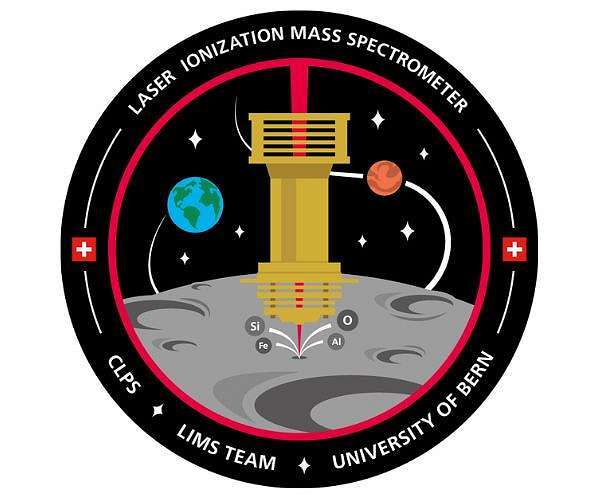13.11.2023

LIMS is to be installed on a CLPS vendor lunar lander platform, which will house a variety of instruments for lunar exploration and technology demonstrations. The CLPS delivery landing in the southern polar region of the Moon will allow LIMS to take stationary measurements on site.
In a landmark advancement for lunar science, the University of Bern, a beacon in space research since the Apollo era, is poised to make history once more with its latest instrument, LIMS (Laser Ablation Ionization Mass Spectrometer), set to land on the Moon by 2027. This venture is a part of NASA's Commercial Lunar Payload Services (CLPS) initiative, which integrates the prowess of American companies to propel scientific payloads to the Moon's surface.
The Physics Institute at the University of Bern, renowned for deploying the Bernese solar wind sail through Buzz Aldrin's hands on the Apollo missions, is now gearing up for another celestial chapter. Professor Peter Wurz, an Astrophysics expert at the University and the Project Leader for LIMS, expressed pride in the institute's involvement in NASA's initiative, emphasizing the instrument's role in the chemical analysis of lunar materials.
LIMS embodies a sophisticated leap in space technology. It operates using a pulsed laser system to analyze lunar samples, meticulously measuring their chemical elements and isotopes. This technique allows scientists to deduce the chemical and physical processes that have sculpted the Moon's surface. Andreas Riedo, Senior Project Manager for LIMS, elucidates that this novel method is pioneering for a space mission, offering a gateway to understanding the Moon's evolution and possibly aiding in dating geological processes.
The instrument is destined for the Moon's southern polar region, a site ripe for scientific discovery. Here, LIMS is expected to conduct stationary measurements, gleaning insights from elements within the lunar soil that could chronicle the age of the material and the timing of lunar geological phenomena. This data, according to Riedo, has the potential to deliver a wealth of information that was previously attainable only through Earth-based laboratories.
The University of Bern's role extends beyond just scientific inquiry; it is intertwined with Swiss industry. The development of LIMS, initiated over two decades ago, is a testament to the long-term dedication and expertise housed within the university's Space Research and Planetary Sciences WP Division. Peter Wurz notes the significance of delivering a Swiss-made system to the Moon, reaping the rewards of years of diligent work and innovation.
Furthermore, the legacy of the Bernese solar wind sail is not lost on this new mission. The technology and experience gained from the Apollo missions and the measurement of local interstellar gas have paved the way for the LIMS project. Riedo points out that the technology developed for LIMS could also be instrumental in future space exploration missions, including the quest for life detection on planets like Venus, Mars, and the icy moons of Jupiter and Saturn.
The collaboration with local industries underscores the Physics Institute's commitment to fostering a synergy between academic research and industrial prowess. This partnership has cultivated a hotbed for developing instruments that not only push the boundaries of space exploration but also contribute to the Swiss legacy in space technology.
As the University of Bern prepares to contribute to NASA's CLPS mission with its LIMS instrument, the global space exploration community watches with bated breath. The fruits of Swiss ingenuity, coupled with international cooperation, are on the cusp of unlocking further secrets of our celestial neighbor, promising to enhance our understanding of the Moon and beyond.
Quelle: SD
